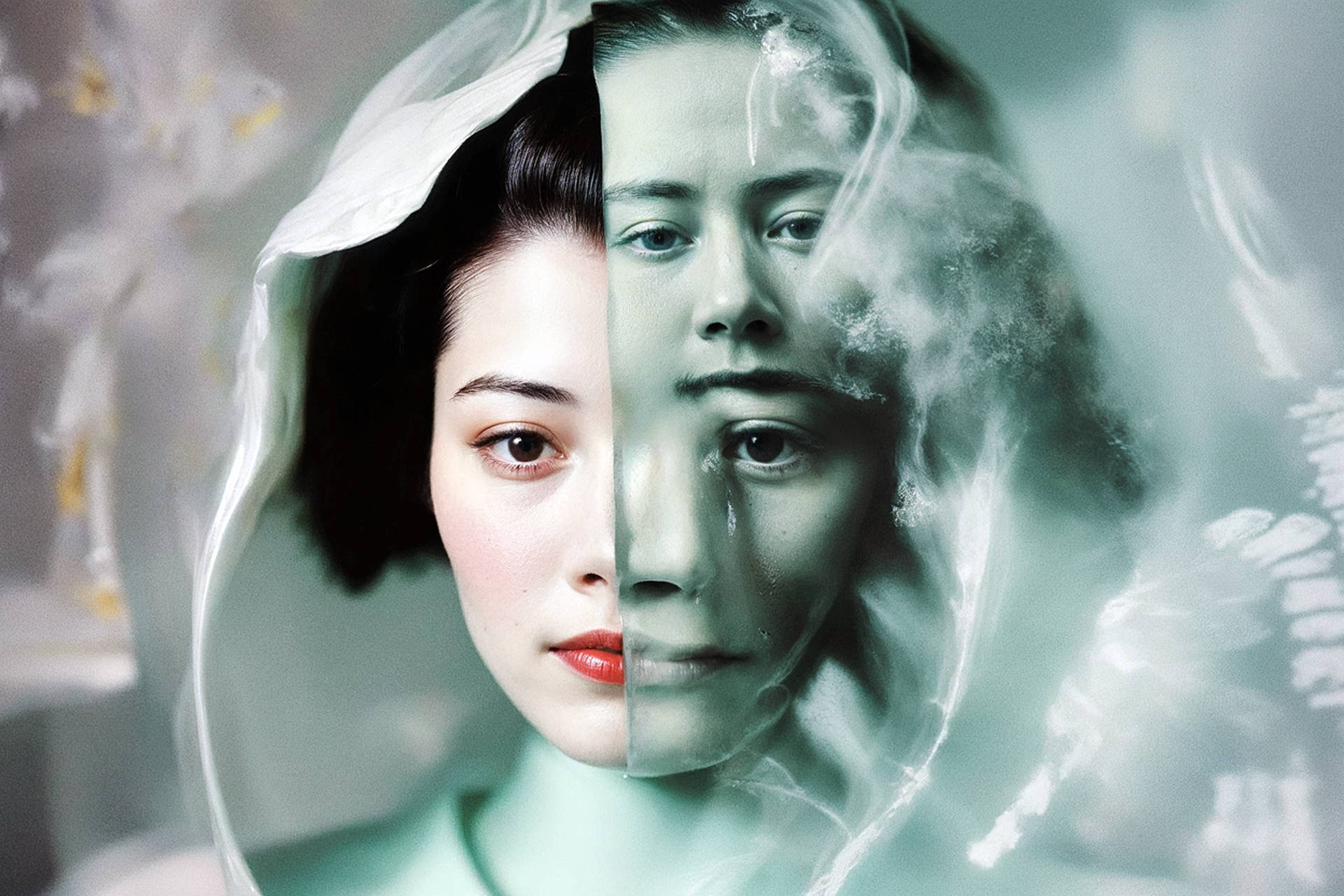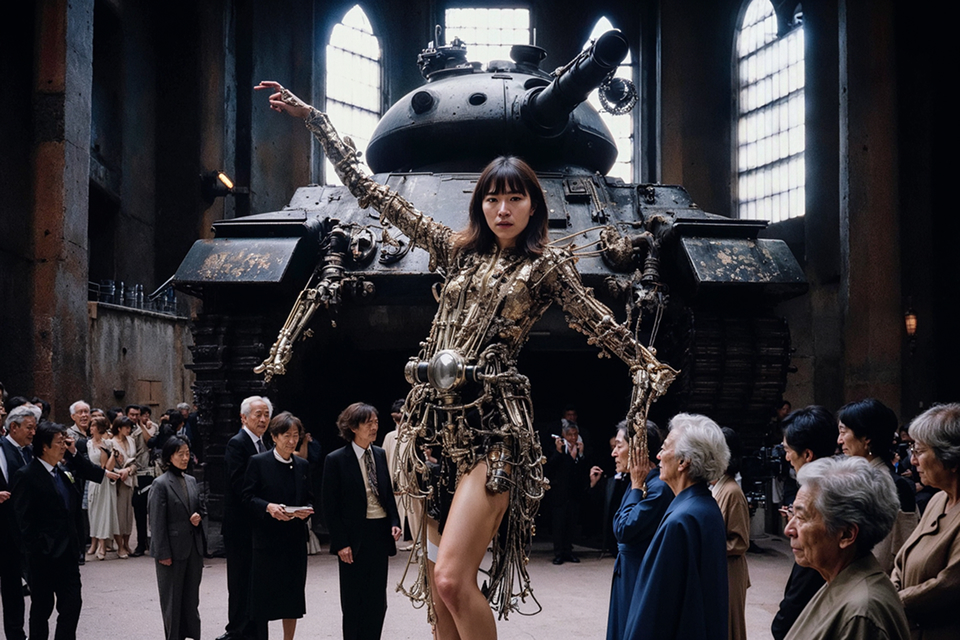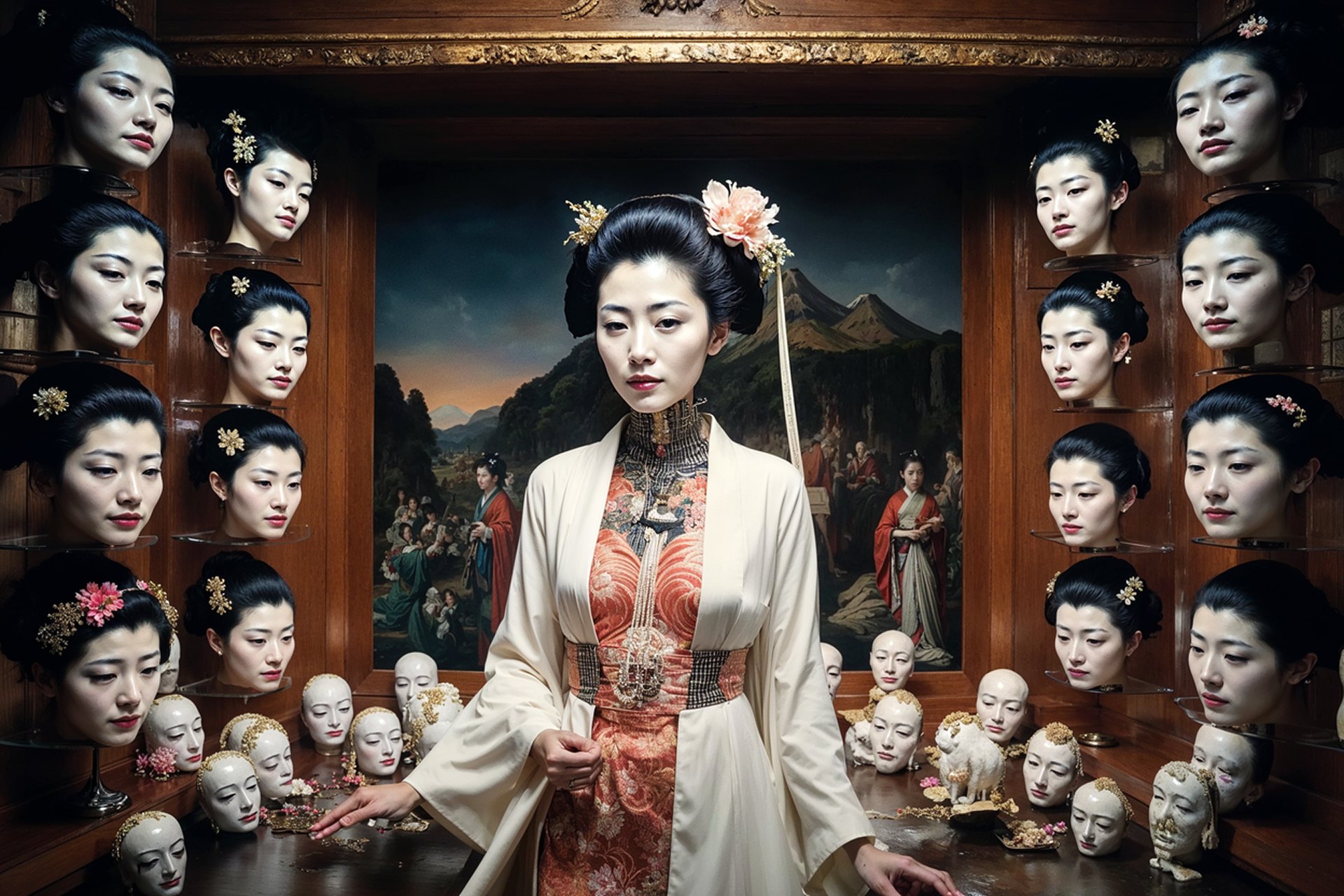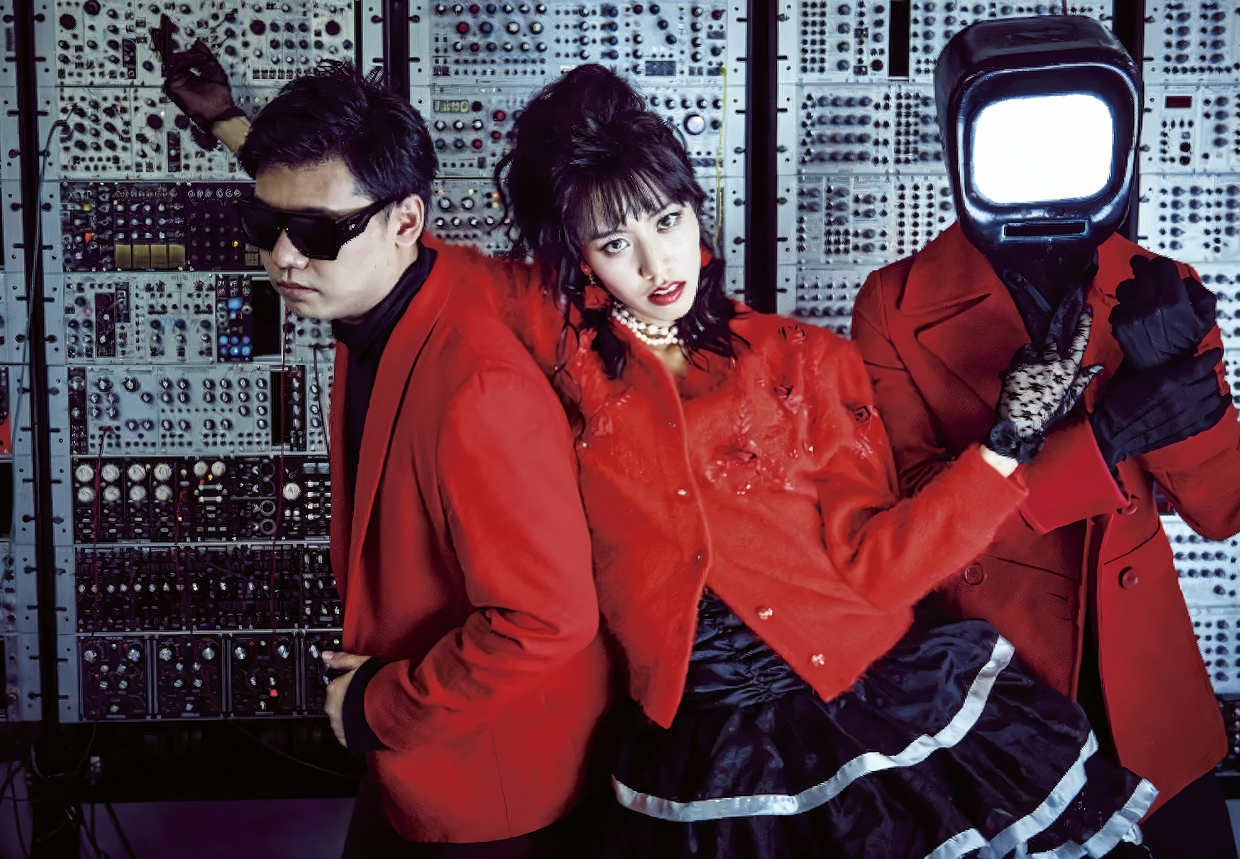Merzmensch. In the 1st Issue of the AI Art Magazine you mentioned the “timeless human desire for self-expression, and quest for immortality through memory, art, technology.” This resonates with the core philosophy of Ghost in the Shell. You also explore synthetic memories and identity in your work—what does memory mean to you, especially when creating new visions of a non-existent past?
Emi Kusano. I believe memory is inherently fragile—it is constantly reconstructed, deeply subjective, and carries a different truth for each individual. What fascinates me is how memory keeps reshaping itself, blending imagination, experience, and emotion into something that feels real, even when it isn’t.
In today’s world, where we are overwhelmed by an excess of information, I often feel as though my own memories are slipping away, replaced or overwritten by digital noise. It’s a sensation many people of our generation share—this blurring between what we truly remember and what we’ve simply consumed.
By confronting that uncertainty, I try to explore the beauty and anxiety of living in an age when truth and illusion are indistinguishable. For me, working with memory is not about preserving the past, but about questioning how we construct reality itself.
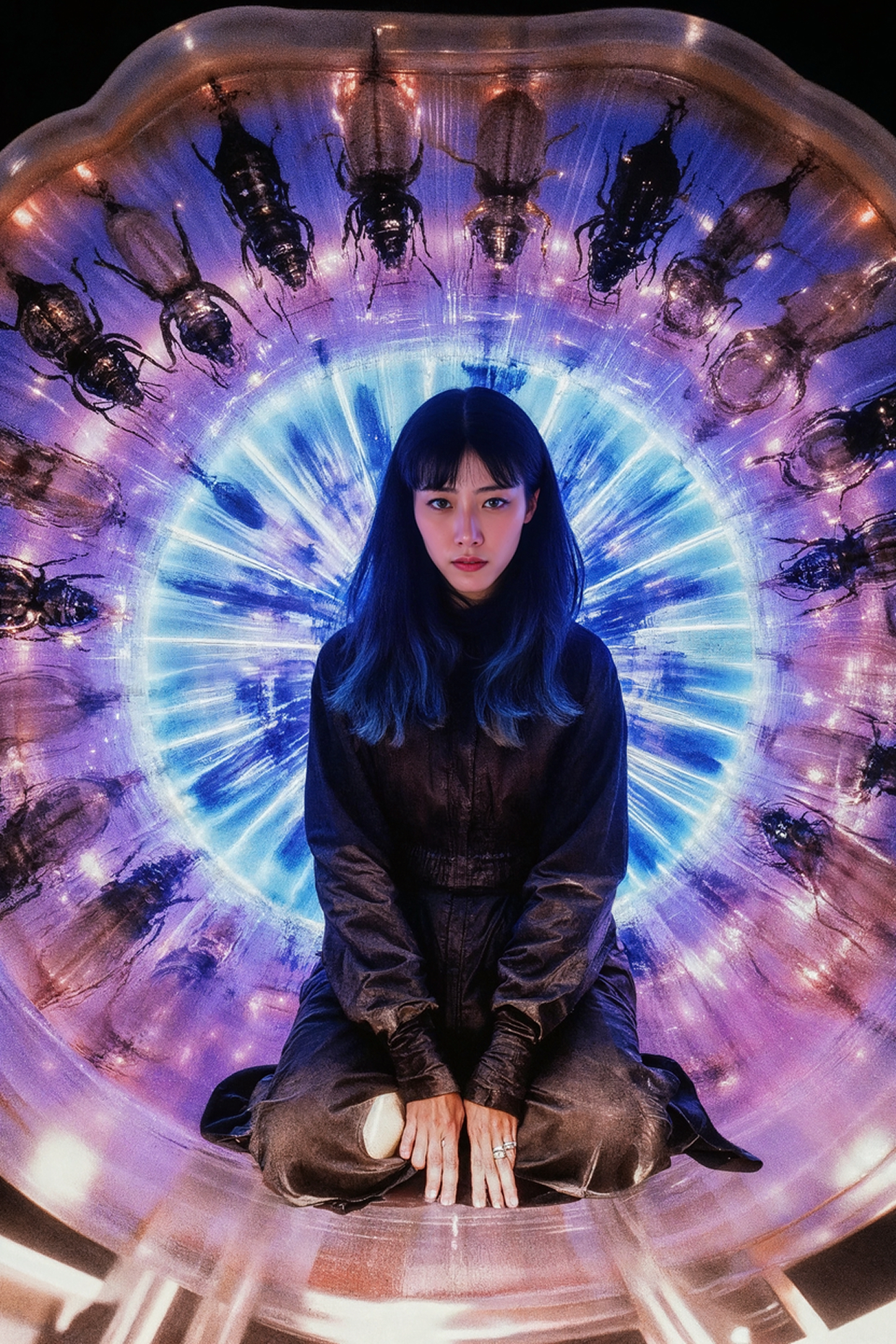
Emi Kusano, EGO IN THE SHELL, Debugging The Ghost.
Merzmensch. Your exhibition is highly spatial—not just visually, but also physically through the CRT monitor installation and your holographic self interrogating your identity. It reminded me of Nam June Paik’s media sculptures and cyberpunk narratives like Ghost in the Shell, SerialExperiments Lain, or even Cowboy Bebop’s “Brain Scratch” episode.How do you conceptualize the use of space—both physical and psychological—in your work? And which artistic or narrative references were consciously important to you when shaping this exhibition?
Emi Kusano. Interestingly, my very first installation—created about ten years ago during an art hackathon—also involved CRT monitors. For me, obsolete technology has always symbolized the inevitability of decay. These old screens, once vessels of the future, now embody fragility and impermanence.
When I project AI-generated imagery onto a CRT display, it looks entirely different—softer, more transient, as if the memory itself were flickering. I see CRTs as containers of memory, where the ghosts of past technologies continue to breathe.
Of course, I’m deeply influenced by Nam June Paik’s idea of media as a living organism. At the same time, the concept that a “vessel can host a spirit,” as seen in Ghost in the Shell, also resonates with me. I wanted to create a space where technology is not merely a tool, but a body in which memory and consciousness can momentarily reside.
Merzmensch. Do you count yourself among post-anthropocentric artists, using AI more than just a tool? Which meaning does AI have in your oeuvre? And what meaning does ‘human’ have in this context?
Emi Kusano. Yes, I would say this question captures my position quite well. For me, AI is not just a tool—it’s both a collaborator and a mirror that reflects the human condition.I see myself as close to a post-anthropocentric perspective, but not one that rejects humanity. Instead, I view humans as beings that evolve alongside technology.
By observing how AI interprets and reconstructs “me,” I often rediscover human emotions, limitations, and desires. In that sense, AI becomes an extension of the soul—a medium through which we can examine what it truly means to be human.
Merzmensch. In your Neural Fad series, exhibited during the DXP show (2023) at the 21st Century Museum of Contemporary Art in Kanazawa, you were already exploring synthetic nostalgia. Could you briefly share how this path led you to the official Ghost in the Shell universe, and how curator Yohsuke Takahashi from Kanazawa was involved?
Emi Kusano. In fact, Yohsuke Takahashi wasn’t at the 21st Century Museum at the time of the DXP Exhibition, but he discovered my work through that show, which eventually led to our collaboration on this project.
In his
curatorial statement, he described my practice as an “ontological inquiry in the age of AI,” positioning the generation of “non-existent memories” not as fiction, but as an exploration of the fragility that underpins identity itself. He also connected my work to a broader historical and cultural continuum—linking it to Asian notions of the body, ritualized public space, and collective memory. I was deeply moved by how he situated the work within that lineage.
